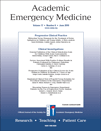Evidence-Based Diagnosis
Evidence-Based Diagnosis . By , . New York : Cambridge University Press , 2009 ; 295 pp; $49.99 (softcover ).
Evidence-Based Diagnosis is a tool provided to physicians to aid in understanding diagnostic, screening, and prognostic tests in clinical medicine. This is a new member of the group of publications focusing on evidence-based medicine in clinical practice. The authors state that they restrained from packing this resource full of mathematics and focused instead on practical applicability.
This book is organized into category of tests. The first group of chapters introduces definitions. The next collection of chapters introduces various diagnostic tests: interobserver agreement, measurement errors, dichotomous tests, continuous tests, screening tests, prognostic tests, and decision rules. The last section of chapters explains treatment effects as a result of randomized and nonrandomized trials, p-values, and confidence intervals. Each chapter starts with a general introduction, followed by sections explaining each test. To enhance the text, large tables and diagrams are inserted to define terms, give examples of concepts, and provide summaries. Each chapter concludes with exercises for the reader to practice the concepts introduced.
The pretest and posttest concept is used in each chapter. The amazing part is that the authors explain complex concepts with minimal math, to avoid frustrating the novice clinician. For example, the first chapter talks about interobserver agreement using kappa measurement. In the next sections, the authors define the term, describe how the formula is calculated and derived, and then provide examples of its use and explain its meaning. To meet their objectives, the chapter has tables and figures highlighting the text.
For those with a basic level of knowledge, this is an excellent resource to enhance and expand your understanding of diagnostic testing and its applications in trials. The book’s greatest weakness is that it strives to keep the math aspect to a minimum; thus, more advanced readers may find this too basic.
In summary, Newman and Kohn’s edition of Evidence-Based Diagnosis fills a nice niche for understanding and applying evidence in clinical medicine for the novice.




